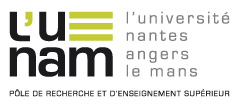CADANSSER
Résumé
The objective of the CADansSER project is to examine the manner in which social transformations in the treatment of sexist and sexual violence (SGBV) are reflected in and addressed through the medium of 'social' dance, or 'participatory' dance (Kaeppler, 1978), in the context of festive occasions and within the framework of organisations and/or learning institutions that conduct regular training sessions. The objective of CADansSER is to provide innovative scientific results and practical solutions for dealing with sexual and gender-based violence (SGBV) that can be adopted by civil society, dance associations and dancers. While the subjects of gender inequality and consent appear to be of concern to an increasing number of individuals and organisations involved in these dances and in society as a whole, they are increasingly being addressed by scholars in the human and social sciences, by those engaged in popular education, and by representatives of the so-called social economy sector. Nevertheless, the matter of cultural and sporting leisure continues to be overlooked. In the CADansSER project, we will build upon the work initiated in an ongoing research project (Thomas et al., 2023) by identifying and analysing the SGBV prevention and training mechanisms that exist in the context of participatory dance in the Auvergne Rhône Alpes region. We will examine each phase in the deployment of these initiatives, with a particular focus on the following aspects: 1) The conceptualisation of these initiatives, with particular emphasis on the circulation of knowledge and practices based on the sharing of experiences in other domains; 2) The operationalisation of the system, with a focus on understanding the training, work and experience of the 'SGBV referents' (the individuals responsible for managing the VSS prevention and care initiatives in dance venues); 3) The reception of the system by the audiences for these dances, with the objective of identifying potential avenues for improvement. The anticipated outcomes are based on the co-production of a multimedia corpus by the collaborative partners from the associative and scientific spheres. 1) The objective is to co-construct a typology of programs for preventing sexual and gender-based violence (SGBV) in dance spaces. This will be based on a participatory mapping of programs and interviews with members of organisations that provide dance practices. 2) The aim is to help improve the content of training for 'SGBV referents', who have a variety of backgrounds and expectations. This training will then be disseminated to a variety of communities. 3) To contribute to the optimisation of practices relating to VSS and their adaptation to the relevant target audiences. This work, the result of a partnership between members of the University of Saint-Etienne and Crefad Loire, will be carried out with and for the participants in the social worlds under study. It will be based on an unprecedented collaboration between the fields of dance and those of social sciences and popular education.
Le but du projet CADansSER est d’étudier la prise en compte, et en charge, des évolutions sociales en matière de gestion des violences sexistes et sexuelles (VSS) au sein des danses « sociales », ou danses « de participation » (Kaeppler, 1978), lors d’événements festifs et dans les associations et/ou écoles pourvoyeuses d’ateliers réguliers. L’ambition de CADansSER est d’apporter des résultats scientifiques innovants et des réponses concrètes concernant la prise en charge des VSS, appropriables par la société civile, les associations de danse, et les danseurs et danseuses.
Alors que les sujets des inégalités de genre et du consentement apparaissent être des préoccupations pour un nombre grandissant d’acteur·ices des mondes de ces danses comme dans la société, ils sont de plus en plus traités par les sciences humaines et sociales, l’éducation populaire ou encore le secteur de l’économie sociale et solidaire. Néanmoins leur questionnement dans les loisirs culturels et sportifs reste marginal. Dans le projet CADansSER, prolongeant le travail initié dans une recherche en cours (Thomas et al., 2023), nous chercherons à repérer et analyser les dispositifs de prévention et formation en matière de VSS existant dans les mondes des danses de participation en région Auvergne Rhône Alpes. Nous étudierons chaque phase du déploiement de ces dispositifs citoyens : 1) la conception de ces dispositifs, notamment la circulation des savoirs et pratiques à partir du partage d’expériences dans d’autres sphères ; 2) la mise en place du dispositif en s’attachant à comprendre la formation, le travail et le vécu de « référent·es VSS » (les personnes qui portent les actions de prévention et prise en charge des VSS dans les lieux de danse); 3) la réception des dispositifs par les publics de ces danses ; pour saisir les leviers d’amélioration. Les résultats attendus sont, à partir de supports audios, visuels et écrits coproduits par les partenaires associatifs et scientifiques : 1) coconstruire une typologie des dispositifs en matière de prévention des VSS dans les espaces de danses à partir d’une cartographie participative des dispositifs et d’entretiens avec des membres des organisations pourvoyeuses de pratiques de danse ; 2) participer à améliorer les contenus de formation des « référent·es VSS » aux parcours et attentes hétérogènes, et à l’essaimage dans des communautés variées ; 3) contribuer à l’optimisation des pratiques relatives aux VSS et leur adaptation selon les publics visés. Ce travail, fruit du partenariat entre des membres de l’Université de Saint-Etienne et du Crefad Loire, sera mené avec et pour les acteur·rices des mondes sociaux étudiés, à partir d’une collaboration inédite entre les mondes des danses et ceux des sciences sociales et de l’éducation populaire.
Domaines
Sociologie
Fichier principal
 Cadansser projet détaillé vf.pdf (749.59 Ko)
Télécharger le fichier
Cadansser projet détaillé.pdf (662.02 Ko)
Télécharger le fichier
Cadansser projet détaillé vf.pdf (749.59 Ko)
Télécharger le fichier
Cadansser projet détaillé.pdf (662.02 Ko)
Télécharger le fichier
| Origine | Fichiers produits par l'(les) auteur(s) |
|---|---|
| licence |
| Origine | Fichiers produits par l'(les) auteur(s) |
|---|





